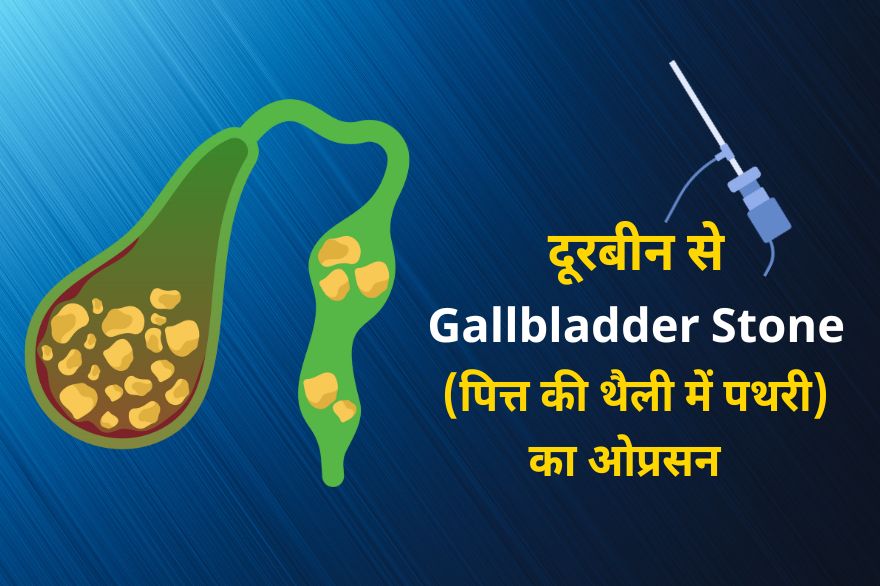
Gallbladder Stone
Gallbladder Stones (Cholelithiasis): Causes, Symptoms, and Treatment
Gallbladder stones, also known as cholelithiasis, are solid particles that form in the gallbladder. The gallbladder is a small, pear-shaped organ located beneath the liver, responsible for storing bile produced by the liver. Gallstones can vary in size and composition, and their presence can lead to discomfort and potential complications. Let’s explore the causes, symptoms, and treatment options for gallbladder stones.
Causes of Gallbladder Stones:
– High cholesterol levels: The most common type of gallstones is cholesterol stones, which form when bile contains too much cholesterol, leading to crystal formation.
– Bilirubin imbalance: Pigment stones can develop when the liver produces too much bilirubin, a substance created during the breakdown of red blood cells.
– Gallbladder motility issues: If the gallbladder fails to empty bile properly, it can lead to stagnant bile and stone formation.
Symptoms of Gallbladder Stones:
– Abdominal pain: Intermittent or constant pain in the upper right abdomen or under the ribcage is a typical symptom.
– Back pain: Pain may radiate to the back or right shoulder.
– Nausea and vomiting: Some individuals may experience nausea and vomiting.
– Indigestion: Bloating, gas, and indigestion can occur after meals.
– Jaundice: Yellowing of the skin and eyes may occur if a stone blocks the bile duct.
Treatment of Gallbladder Stones:
– Watchful waiting: Asymptomatic gallstones may not require treatment if they do not cause discomfort or complications.
– Medications: Certain medications can dissolve cholesterol stones, but this treatment process is slow and may not be suitable for everyone.
– Gallstone removal: Endoscopic procedures or minimally invasive surgery (laparoscopic cholecystectomy) can be performed to remove the gallbladder and stones.
– Shockwave therapy: In some cases, shockwave therapy can be used to break down larger stones for easier removal.
Prevention of Gallbladder Stones:
– Maintain a healthy diet: Limiting the intake of high-fat and cholesterol-rich foods can reduce the risk of developing gallstones.
– Stay hydrated: Drinking plenty of water can help prevent the concentration of bile and the formation of stones.
– Avoid rapid weight loss: Gradual and steady weight loss can be beneficial to prevent gallstone formation associated with rapid weight loss.
If you experience symptoms of gallbladder stones, it is crucial to seek medical attention for an accurate diagnosis and appropriate treatment. A healthcare professional can assess your condition and recommend the most suitable approach to manage gallbladder stones effectively.
पित्ताशय की पथरी (कोलेलिथियसिस): कारण, लक्षण और उपचार
पित्ताशय की पथरी, जिसे कोलेलिथियसिस भी कहा जाता है, ठोस कण होते हैं जो पित्ताशय में बनते हैं। पित्ताशय एक छोटा, नाशपाती के आकार का अंग है जो यकृत के नीचे स्थित होता है, जो यकृत द्वारा उत्पादित पित्त के भंडारण के लिए जिम्मेदार होता है। पित्ताशय की पथरी आकार और संरचना में भिन्न हो सकती है, और उनकी उपस्थिति असुविधा और संभावित जटिलताओं का कारण बन सकती है। आइए पित्ताशय की पथरी के कारणों, लक्षणों और उपचार के विकल्पों का पता लगाएं।
पित्ताशय की पथरी के कारण:
– उच्च कोलेस्ट्रॉल स्तर: पित्त पथरी का सबसे आम प्रकार कोलेस्ट्रॉल पथरी है, जो तब बनता है जब पित्त में बहुत अधिक कोलेस्ट्रॉल होता है, जिससे क्रिस्टल का निर्माण होता है।
– बिलीरुबिन असंतुलन: जब लीवर बहुत अधिक बिलीरुबिन का उत्पादन करता है, तो रंगद्रव्य की पथरी विकसित हो सकती है, यह पदार्थ लाल रक्त कोशिकाओं के टूटने के दौरान बनता है।
– पित्ताशय की गतिशीलता संबंधी समस्याएं: यदि पित्ताशय पित्त को ठीक से खाली करने में विफल रहता है, तो इससे पित्त का रुकना और पथरी का निर्माण हो सकता है।
पित्ताशय की पथरी के लक्षण:
– पेट दर्द: पेट के ऊपरी दाहिने हिस्से में या पसली के नीचे रुक-रुक कर या लगातार दर्द होना एक सामान्य लक्षण है।
– पीठ दर्द: दर्द पीठ या दाहिने कंधे तक फैल सकता है।
– मतली और उल्टी: कुछ व्यक्तियों को मतली और उल्टी का अनुभव हो सकता है।
– अपच: भोजन के बाद सूजन, गैस और अपच हो सकता है।
– पीलिया: यदि पथरी पित्त नली को अवरुद्ध कर दे तो त्वचा और आंखों में पीलापन आ सकता है।
पित्ताशय की पथरी का उपचार:
– सतर्क प्रतीक्षा: स्पर्शोन्मुख पित्त पथरी को उपचार की आवश्यकता नहीं हो सकती है यदि वे असुविधा या जटिलताएँ पैदा नहीं करते हैं।
– दवाएँ: कुछ दवाएँ कोलेस्ट्रॉल की पथरी को घोल सकती हैं, लेकिन यह उपचार प्रक्रिया धीमी है और हर किसी के लिए उपयुक्त नहीं हो सकती है।
– पित्ताशय की पथरी को हटाना: पित्ताशय और पथरी को हटाने के लिए एंडोस्कोपिक प्रक्रियाएं या न्यूनतम इनवेसिव सर्जरी (लैप्रोस्कोपिक कोलेसिस्टेक्टोमी) की जा सकती है।
– शॉकवेव थेरेपी: कुछ मामलों में, आसानी से हटाने के लिए बड़े पत्थरों को तोड़ने के लिए शॉकवेव थेरेपी का उपयोग किया जा सकता है।
पित्ताशय की पथरी की रोकथाम:
– स्वस्थ आहार बनाए रखें: उच्च वसा और कोलेस्ट्रॉल युक्त खाद्य पदार्थों का सेवन सीमित करने से पित्त पथरी के विकास के जोखिम को कम किया जा सकता है।
– हाइड्रेटेड रहें: भरपूर पानी पीने से पित्त की सांद्रता और पथरी के निर्माण को रोकने में मदद मिल सकती है।
– तेजी से वजन घटाने से बचें: तेजी से वजन घटाने के साथ जुड़े पित्त पथरी के गठन को रोकने के लिए धीरे-धीरे और लगातार वजन घटाना फायदेमंद हो सकता है।
यदि आप पित्ताशय की पथरी के लक्षणों का अनुभव करते हैं, तो सटीक निदान और उचित उपचार के लिए चिकित्सा सहायता लेना महत्वपूर्ण है। एक स्वास्थ्य देखभाल पेशेवर आपकी स्थिति का आकलन कर सकता है और पित्ताशय की पथरी को प्रभावी ढंग से प्रबंधित करने के लिए सबसे उपयुक्त दृष्टिकोण की सिफारिश कर सकता है।
